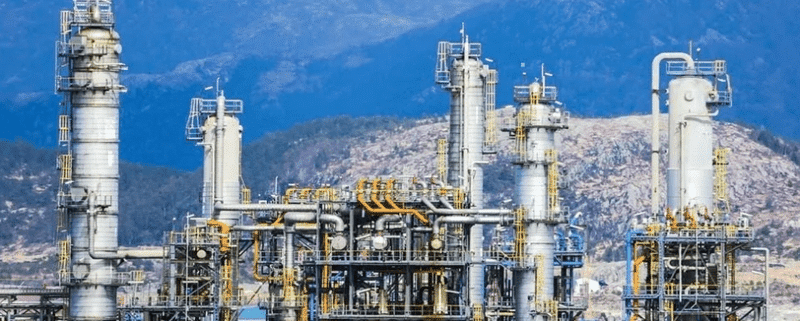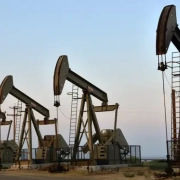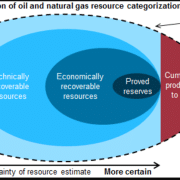How Carbon Capture Initiatives Impact Oil and Gas Leasing
The oil and gas industry plays a significant role in the global energy sector, providing the raw materials necessary for powering economies, industries, and transportation. However, the growing concern over climate change has led to an increased focus on environmental responsibility.
Scientists are exploring carbon capture, utilization, and storage (CCUS) technologies as one of the key solutions to mitigate the effects of carbon emissions. These initiatives are now influencing various sectors, including oil and gas leasing, potentially reshaping the future of resource extraction.
In this article, we will delve into the concept of carbon capture, how it works, and its growing relevance to oil and gas leasing. We will explore how these initiatives are affecting the policies, economics, and regulatory frameworks within the energy sector and discuss how they could shape the future of oil and gas operations.
Understanding Carbon Capture and Its Role in Climate Mitigation
Technologies designed to capture carbon dioxide (CO2) emissions from industrial processes, prevent them from entering the atmosphere, and either store them underground or use them for other applications are called carbon capture, utilization, and storage.
The primary goal of carbon capture is to reduce the carbon footprint of industries that are responsible for significant greenhouse gas emissions, such as fossil fuel extraction, cement production, and steel manufacturing.
The process involves three main steps:
- Capture: Industrial emissions are captured directly by chemical processes or physical separation methods.
- Transport: Pipelines or ships transport the captured CO2 to a storage site.
- Storage: Operators inject the CO2 into deep underground rock formations, securely storing it for long periods and preventing its release into the atmosphere.In addition to storage, various industries utilize CO2 in ways such as enhanced oil recovery (EOR), where operators inject CO2 into oil fields to help extract more oil.
The Importance of Carbon Capture in Oil and Gas Operations
Oil and gas operations are among the highest contributors to global carbon emissions. As the world faces mounting pressure to limit global warming and meet international climate targets, the oil and gas industry is under increasing scrutiny. Carbon capture technologies have emerged as a key tool for reducing emissions while still allowing oil and gas production to continue.
Carbon capture is particularly relevant in oil and gas operations for several reasons:
- Emissions Reduction: Oil and gas exploration, extraction, and refining are energy-intensive processes that release large amounts of CO2. By incorporating carbon capture into these operations, companies can significantly reduce their environmental impact.
- Enhanced Oil Recovery: One of the most common uses of carbon capture in the oil and gas industry is in enhanced oil recovery (EOR). In this process, CO2 is injected into oil reservoirs to increase pressure and improve oil recovery rates. This not only boosts production but also helps to store CO2 underground, offering a dual benefit of enhanced resource extraction and emission reduction.
- Regulatory Compliance: Governments around the world are introducing stricter emissions regulations. Oil and gas companies that adopt carbon capture technologies are better positioned to comply with these regulations, ensuring their operations remain viable in an increasingly carbon-constrained world.
Oil and Gas Leasing in the Context of Carbon Capture
Oil and gas leasing refers to the process by which companies obtain the rights to explore and extract hydrocarbons from a specific area of land or offshore territory. These leases are typically granted by governments or private landowners and provide companies with the legal framework to conduct drilling and exploration activities. Leasing arrangements vary depending on location, regulatory frameworks, and local policies.
As carbon capture initiatives gain momentum, they are starting to have a significant impact on the oil and gas leasing process. There are several ways in which CCUS technologies are influencing leasing practices and the broader energy market:
Integration of Carbon Capture in Lease Agreements
In the past, oil and gas leases were primarily concerned with the exploration and extraction of fossil fuels. However, as carbon capture technologies become more widely adopted, leasing agreements are evolving to incorporate provisions for carbon storage and CO2 injection. Governments and regulators are increasingly requiring companies to include carbon capture strategies in their exploration plans, especially in regions with high environmental sensitivity.
This integration could involve setting aside portions of leased land or offshore acreage for the development of carbon storage sites. Additionally, oil and gas companies may be encouraged or required to invest in CCUS infrastructure as part of their lease agreement. This ensures that, while fossil fuel extraction continues, measures are in place to mitigate the environmental impact of these operations.
Impact on Lease Pricing and Valuation
The presence of carbon capture opportunities can have a direct impact on the valuation of oil and gas leases. For example, areas with the potential for CO2 storage may be considered more valuable due to the added environmental benefit of reducing carbon emissions. On the other hand, regions that are seen as unsuitable for carbon capture may face lower leasing values, as they may be subject to higher regulatory scrutiny and potential penalties for high carbon emissions.
As carbon capture technologies become more sophisticated and widely adopted, the market for oil and gas leases may evolve to prioritize regions with favorable geological conditions for CO2 storage. This shift could lead to a revaluation of oil and gas assets, influencing investment decisions and lease negotiations.
Government Incentives and Policies
Governments are increasingly recognizing the importance of carbon capture initiatives in meeting climate goals. As a result, many countries are introducing policies and incentives to encourage the adoption of CCUS technologies in the oil and gas sector. These incentives could include tax credits, subsidies, and grants for companies that invest in carbon capture projects.
For instance, in certain jurisdictions, oil and gas companies may be eligible for financial incentives or favorable lease terms if they incorporate carbon capture technologies into their operations. This could include reduced lease fees or extended lease terms in exchange for a commitment to develop CO2 storage capacity. These policies aim to align the economic interests of oil and gas operators with the environmental objectives of reducing carbon emissions.
Public and Investor Pressure for Sustainable Practices
As environmental, social, and governance (ESG) criteria gain importance in investment decision-making, oil and gas companies are facing increasing pressure from both the public and investors to adopt sustainable practices. This includes reducing their carbon footprint and incorporating carbon capture technologies into their operations.
Investors particularly focus on the long-term viability of oil and gas companies in a world that is transitioning to cleaner energy sources. Companies that fail to embrace carbon capture may face reputational damage, reduced investment, and higher regulatory risks. Conversely, companies that proactively adopt CCUS strategies may attract investors looking to support sustainable and low-carbon businesses. As a result, companies may increase the demand for leases in regions where they can effectively implement carbon capture, while they may show decreased interest in regions that are less conducive to CCUS.
Collaboration Between Oil and Gas Companies and Carbon Capture Providers
The oil and gas industry is increasingly collaborating with carbon capture technology providers, research institutions, and governments to explore new methods for capturing and storing CO2.
Experts expect these collaborations to play a significant role in advancing carbon capture technologies, making them more efficient and cost-effective.
In the context of oil and gas leasing, these partnerships may influence the types of agreements that companies make.
For example, a lease agreement may include provisions for sharing data, research findings, or infrastructure related to CCUS. This could foster innovation and improve the overall effectiveness of carbon capture initiatives, benefiting both oil and gas companies and the broader environment.
Challenges and Considerations for Oil and Gas Leasing in a Carbon-Capture World
Carbon capture initiatives present significant opportunities for the oil and gas industry. They also come with a set of challenges and considerations. Some of the key issues that need to be addressed include:
- High Costs of Implementation: Carbon capture technologies remain expensive to deploy, especially on a large scale. For oil and gas companies, the cost of implementing CCUS projects could be a significant financial burden. This may affect the profitability of certain leases and limit. the extent to which carbon capture can be integrated into oil and gas operations.
- Storage Capacity: Not all geological formations are suitable for CO2 storage. Oil and gas companies need to carefully evaluate the geological characteristics of leased areas to determine whether they can accommodate large-scale CO2 storage. This could limit the availability of suitable sites for carbon capture and affect the value of certain leases.
- Regulatory Complexity: The regulatory landscape surrounding carbon capture is complex and varies across jurisdictions. Different governments may have different requirements for carbon storage, emissions reductions, and reporting. Oil and gas companies must navigate this regulatory complexity when negotiating lease agreements and developing carbon capture strategies.
- Long-Term Monitoring and Liability: Storing CO2 underground requires long-term monitoring to ensure that it remains securely stored and does not leak into the atmosphere.CO2 leakage may cause future environmental damage, and oil and gas companies may be held responsible, presenting a potential liability for them. Addressing this long-term responsibility is a key consideration in the development of carbon capture initiatives.
Looking Ahead: The Future of Oil and Gas Leasing and Carbon Capture
The relationship between carbon capture initiatives and oil and gas leasing is likely to evolve. This is as both technologies and policies continue to develop. In the near term, the integration of carbon capture into leasing agreements will become more common. Regulatory pressures and economic incentives will drive it.
Over time, as the technologies become more cost-effective and scalable. Carbon capture could become a standard part of oil and gas operations. It is enabling companies to reduce their environmental impact while continuing to meet global energy demands.
The oil and gas industry is adopting carbon capture technologies is not just about compliance. It represents an opportunity to innovate, increase efficiency, and enhance sustainability. The world works toward a low-carbon future. Oil and gas leasing will need to adapt. It includes incorporating carbon capture as a critical component of responsible and profitable energy.
Carbon capture initiatives profoundly impact oil and gas leasing. It is reshaping the way energy companies extract and consume energy.
Technology advances and policies evolve. We can expect carbon capture to become an integral part of the oil and gas industry’s efforts to reduce emissions. Meet regulatory standards and contribute to the global fight against climate change.
Do you have questions related to carbon Capture Initiatives? Reach out to us here.












Leave a Reply
Want to join the discussion?Feel free to contribute!